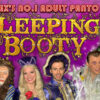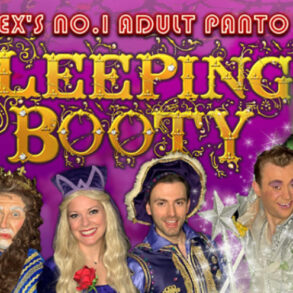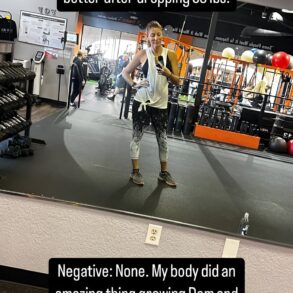Liam Jacobson is an artist, poet and writer from Manurewa, South Auckland. Maggie Tweedie spoke to Liam about their debut poetry collection, Neither.
Poetry has a wicked knack for capturing our worlds. I often wonder what holds many New Zealanders back from using this cathartic form of expression. Perhaps it’s because The West holds poetry to too high of a standard as if it’s an art form that only a select few can achieve. Maybe we need to follow Japan and democratise the act of poetry, building the written form into our day-to-day, much like haiku.
The work of Liam Jacobson (Ngāi Tahu) doesn’t mull over the mess. Instead, their poetry peels back parts of their existence so clearly they make you rethink your own. The lines “and while the mountain of rats that insulate the walls are still dormant or else plotting their heist of my coleslaw” sent a shiver down my spine, reminding me of the days I spent in Dunedin where you would bring your washing in from the line and put them away in your drawers, only to find them soaking wet again the next morning.
Maggie Tweedie: What brought you to poetry as a medium and what felt particularly accessible about it?
Liam Jacobson: You don’t need any material really, there’s really no barrier to entry. Other than industry things but none of that is real anyway. I think that it’s just about translating any thoughts or ideas you have. It’s super easy to get into like that. I was making a lot of devised theatre, so there was a transition point into that. Poetry was more accessible when I was feeling more insular or introverted. It’s this nice relationship with yourself and the world beyond you. That’s what’s cool about it, how many spaces you can press it through.
I hear that presence when I read your poem, BUS TO K. You really show us the daily sights and sounds and the characters you interact with. I feel like I’m there on the bus with you. Where were you when you wrote that poem?
That poem was written on the bus. It’s one of the few poems that didn’t change too much and one of the only poems I rambled out pretty quickly.
I wrote it a couple of years ago. Now It feels like some kind of video or something because I guess a lot of those things I’m talking about have been pushed out because of rent, moved on, or aren’t there anymore. It’s quite dated but in an interesting way.
Have you enjoyed the process of sharing your work with an audience and having that feedback loop open to you?
I think it’s quite interesting and cool seeing what different people think of different parts of it. It’s fun to play with that as well. I realise how clear something was that I didn’t necessarily realise when I was writing it before. Meaning is always changing and coming in tides.
I imagine sometimes you learn more about your own words the more you perform them or read them.
Or I forget things as well. Suddenly when you are performing in a familiar or new space a certain rhyme resurges again.
THE DAY MELTS AMONG ME
************************************
at like 5.30/6ish
when the wind is heavy with gold
and there’re soft shadows of glass, dancing
every afternoon on old wallpaper
painted a sick ivory by the landlord
and while the mountain of rats
that insulate the walls are still dormant
or else plotting their heist of my coleslaw
and an ancient draught bleeds ice
thru the foot of my front door
and black mould is like frost on the ceiling
that’s sagging with age to the floorboards
and a garden of weeds climbs to your hip
thru borer holes
and i’m down to, like
the last third of a bottle of old birthday whiskey
listening to mississipi john hurt hurt with me
rich on winz fraud
in the wet light of the early evening
dreaming of somebody sweet
about then,
when i’ve endured myself long enough
to welcome the hour of angels
I find my breath heavy with calm
The black mould and borer holes you write about in that poem all paint such a visual picture. Reading through that rhythmic way of your writing also adds another layer. How much is performance a part of poetry for you?
I think it’s pretty hard to avoid it. You are either performing in public or performing it privately. It’s pretty inherent within it. For me, the rhythm of mumbling and rambling is so important in the vernacular of your world in that moment or beyond that moment. Performance to me is really special to bring now to something. The cage is fixed so it’s cool to breathe life into it. It’s quite Māori too in that way, it’s quite ancient to say things out loud.
I love the poem, ‘where’s the day gone?’ There’s a cycle of monotony that appears. “The sidewalk stained with secrets” is another line that sings. You leave us with that visual imprint of a place that’s really lived in and really seen a lot. Was that crafted in a cyclical way?
That’s one of the older poems in the book. Honestly, it was a pretty messy time but a pretty fun mess. I guess I was caught in a cycle and a lot of the people around me were as well. There’s a real joy to that space, to this kind of filth, grot and grossness when your life’s like that. I definitely made it in a time like that. I edited it more recently with that more nostalgic eye.
Your publisher Dead Bird Books, is known for finding authors that wouldn’t necessarily fit into a rigid publishing model. What made you decide to release your book through them?
I met Dom (Hoey) a while ago at one of his book releases and they’d been asking me to do it for a while. I think I wanted to do it with them because there’s a friend relationship there. It’s nice to be doing stuff like this with people who you can trust to keep the process warm and to keep me alive. I think other more clinical or institutional places might have made me feel like I was in an airport or something.
Yeah, you don’t want to take the spirit out of the book before you publish it. Do you plan on taking it to Te Waipounamu for the southerners?
I would love to. Even though I have never lived there I still consider that place home. That’s where a lot of my family is buried and where most of my marae are.
Dom Hoey, Isla Huia and I are planning on doing a little tour of the South Island and some less frequented pockets of the North Island as well. You’ll get three for the price of one!
Neither by Liam Jacobson (Dead Bird Books, $30) can be purchased at Unity Books Wellington and Auckland.
This post was originally published on this site be sure to check out more of their content.









